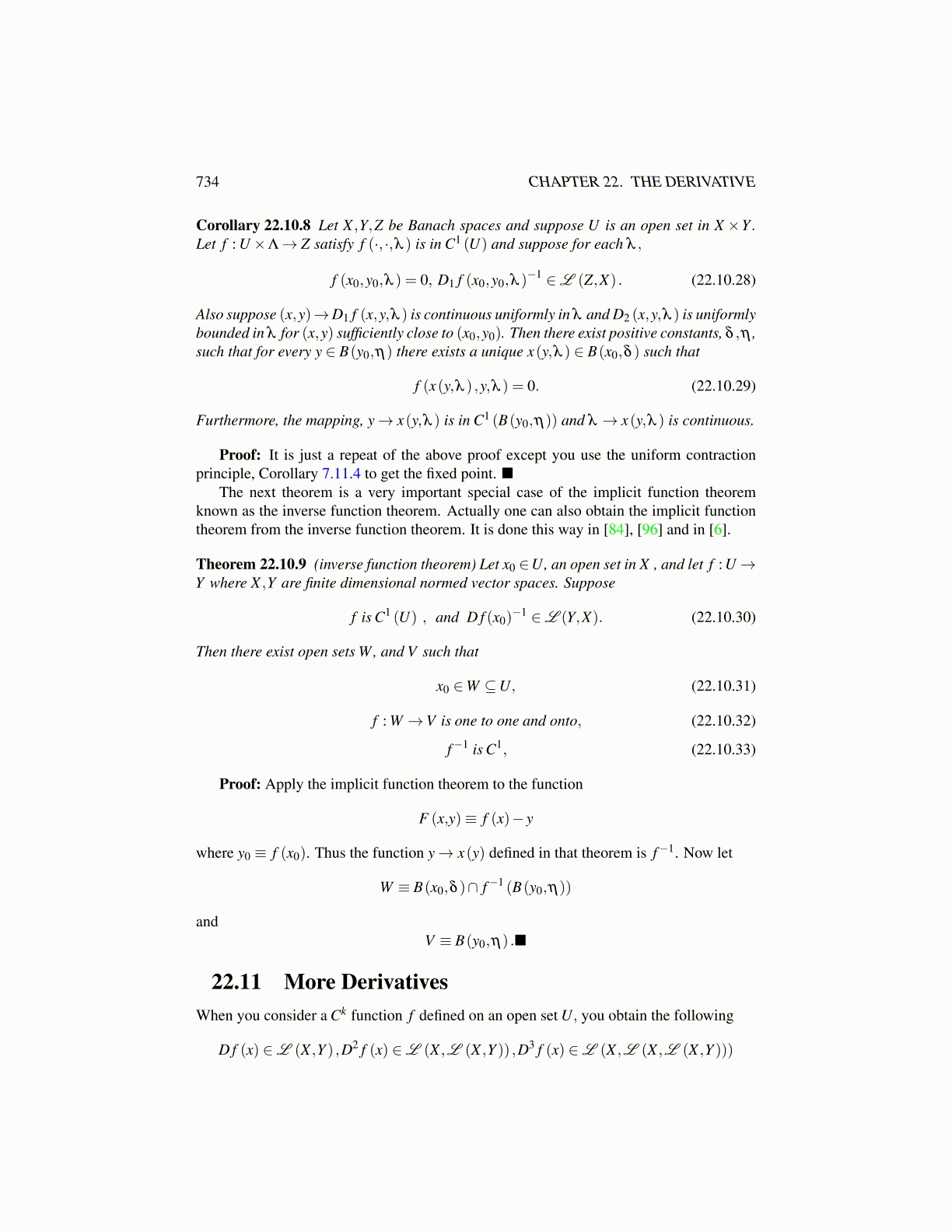
734 CHAPTER 22. THE DERIVATIVE
Corollary 22.10.8 Let X ,Y,Z be Banach spaces and suppose U is an open set in X ×Y .Let f : U×Λ→ Z satisfy f (·, ·,λ ) is in C1 (U) and suppose for each λ ,
f (x0,y0,λ ) = 0, D1 f (x0,y0,λ )−1 ∈L (Z,X) . (22.10.28)
Also suppose (x,y)→D1 f (x,y,λ ) is continuous uniformly in λ and D2 (x,y,λ ) is uniformlybounded in λ for (x,y) sufficiently close to (x0,y0). Then there exist positive constants, δ ,η ,such that for every y ∈ B(y0,η) there exists a unique x(y,λ ) ∈ B(x0,δ ) such that
f (x(y,λ ) ,y,λ ) = 0. (22.10.29)
Furthermore, the mapping, y→ x(y,λ ) is in C1 (B(y0,η)) and λ → x(y,λ ) is continuous.
Proof: It is just a repeat of the above proof except you use the uniform contractionprinciple, Corollary 7.11.4 to get the fixed point.
The next theorem is a very important special case of the implicit function theoremknown as the inverse function theorem. Actually one can also obtain the implicit functiontheorem from the inverse function theorem. It is done this way in [84], [96] and in [6].
Theorem 22.10.9 (inverse function theorem) Let x0 ∈U, an open set in X , and let f : U→Y where X ,Y are finite dimensional normed vector spaces. Suppose
f is C1 (U) , and D f (x0)−1 ∈L (Y,X). (22.10.30)
Then there exist open sets W, and V such that
x0 ∈W ⊆U, (22.10.31)
f : W →V is one to one and onto, (22.10.32)
f−1 is C1, (22.10.33)
Proof: Apply the implicit function theorem to the function
F (x,y)≡ f (x)− y
where y0 ≡ f (x0). Thus the function y→ x(y) defined in that theorem is f−1. Now let
W ≡ B(x0,δ )∩ f−1 (B(y0,η))
andV ≡ B(y0,η) .
22.11 More DerivativesWhen you consider a Ck function f defined on an open set U, you obtain the following
D f (x) ∈L (X ,Y ) ,D2 f (x) ∈L (X ,L (X ,Y )) ,D3 f (x) ∈L (X ,L (X ,L (X ,Y )))